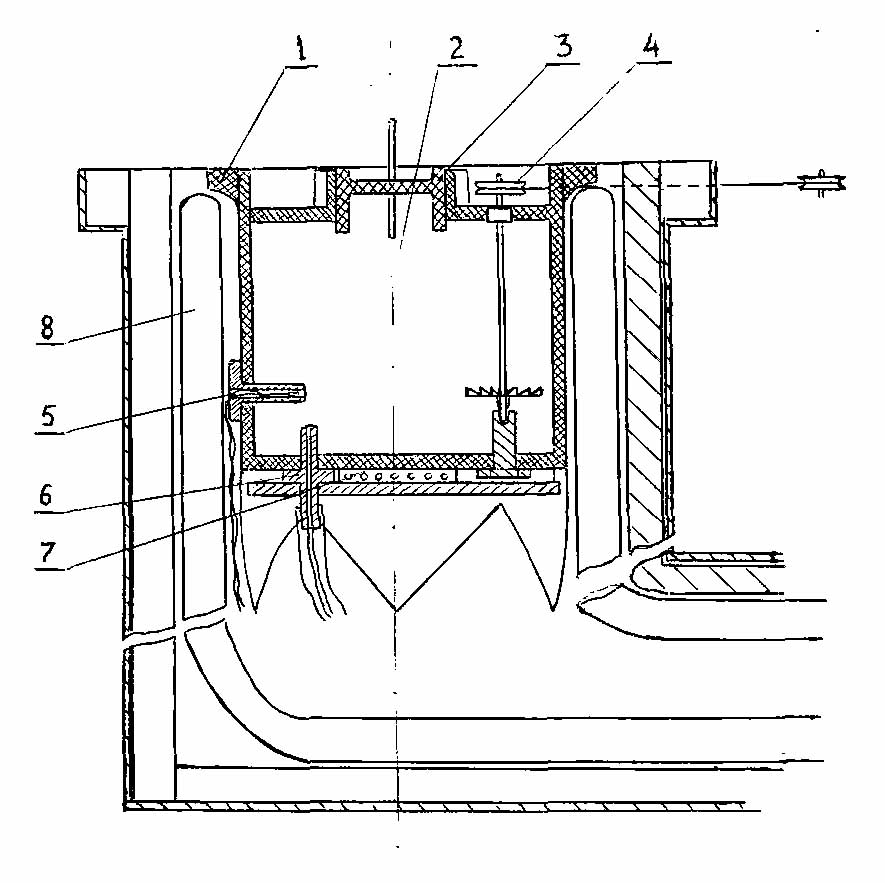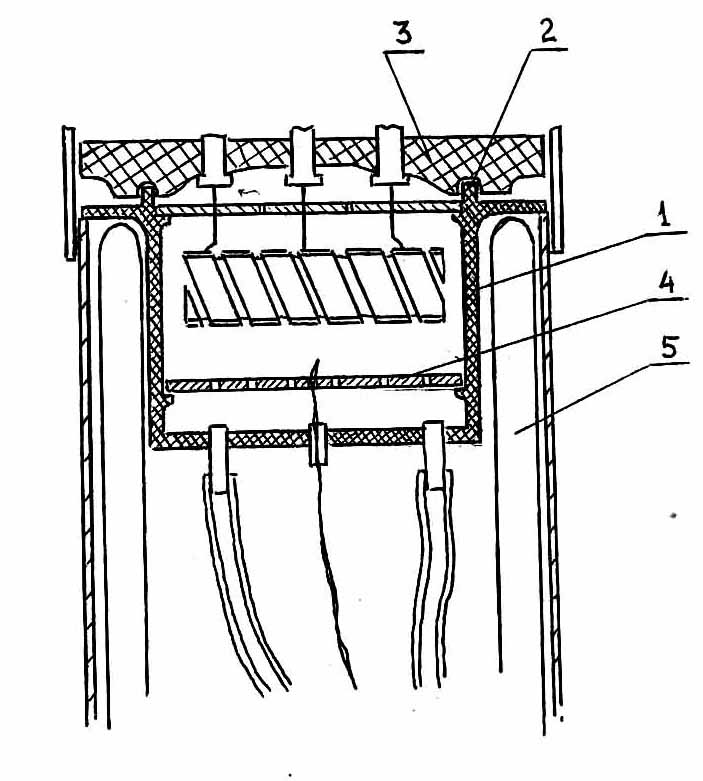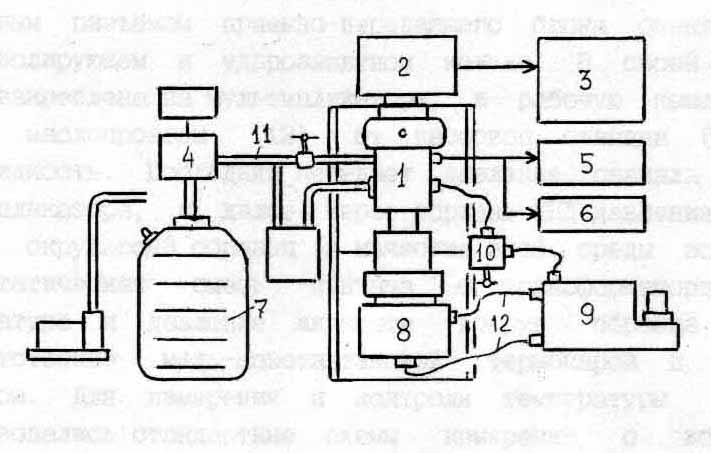SHEMETOV YEVGENY. STUDIES OF PHASE TRANSITIONS IN THE UNITED A2BX4 STRUCTURE β-K2SO4 METHOD NUCLEAR QUADRUPOLE RESONANCE
English abstract § 1.1 § 1.2 §1.3 § 1.4 § 2.1 § 2.2 §2.3 §2.4 § 3.1 § 3.2 § 3.3 § 3.4 § 4.1 § 4.2 § 4.3 § 4.4 Reference Template pdf abstract
§ 2.3 Synthesis of samples.
Most of the compounds A2BX4 used in our experiments, was grown in the laboratory of the Institute of Physics of crystals. .. . L.V.Kirenskogo AS RU. From aqueous solutions of crystals grown V.A.Grankinoy. Bridzhmen method of melt compounds synthesized to I.T.Kokov. Connection Cs2ZnJ4, (NH4)2ZnJ4 and others for NQR studies were synthesized by the author.
During crystallization from solution, the deviation from the stoichiometric ratio of the starting chemical components AX and BX2 was chosen empirically, taking into account their degree of hydration. The composition of the samples was identified based on the reference [71] and periodic data [72, 73, etc.].
Connection of A2BX4 (K2ZnCl4, Rb2ZnBr4, Cs2ZnJ4, Cs2CdJ4,(NH4)2ZnJ4 ) usually crystallized in the form of single-crystal plate splices up to 40mm and a thickness of 5mm . Were synthesized as large single crystals. compounds of other compositions (A2BX5, ABX3, etc.) have had other forms of habit. Some samples of A2BX4 to remove impurities, subjected to repeated recrystallization (Rb2ZnBr4. Cs2ZnJ4). Polycrystalline, blocky or monobloc crystals (Cs2CdJ4, (NH4)2ZnJ4 were prepared from the melt.
Due to the difficulties in carrying out the exact chemical analysis (which was carried out with precision 2%. only for Rb2ZnBr4 ), the degree of purity of samples was evaluated by the criteria proposed by Hamano [52,72]. According to the cited studies, the magnitude of the concentration of impurities in the compounds Rb2ZnCl4 and Rb2ZnBr4, significantly affects the amount of thermal hysteresis of the phase transition at TC ferroelectric phase, as well as on-time behavior quadrupole spin-lattice relaxation time T1Q. For undoped samples hysteresis decreases significantly and there is racing . For example, for the compound Rb2ZnBr4, where in hysteresis phenomena are significantly dependent on the concentration of impurities, the amount of thermal hysteresis ΔT = TCс - TCh samples from various stages of crystallization in this case was 8 -- 3 K.
An additional criterion was the degree of purity of the NQR spectral linewidth in the ordered phase. For the most thoroughly homogeneous width of the synthesized compounds were sintletnyh lines 100-90 kHz.
§ 2.4 Apparatus for NQR studies under high hydrostatic pressure.
Since 1972 year, the Institute of Physics L.V.Kirenskogo USSR Academy Krasnoyarsk Serebrennikov V.L. and Moskalev A.K., [74,75] developed a high-pressure apparatus applied to radiospectroscopic methods. Such equipment, including the need to study phase P-T diagrams of dielectric crystals. Particularly relevant is the use of this instrument for the study of disordered structures neglected, what are incommensurate phases. Detailed description of the devices and technology of high pressure is presented in the monograph [74]. In this section we present the basic principles of experimental and some technical details on which created a new and improved traditional experimental setup.

Typical complex laboratory equipment used in research of structural phase transitions in crystals NQR, including at high hydrostatic pressure is shown in Figure 2.5. It consists of the following components:
. Figure 2.5. Block diagram of the apparatus for the study of phase transitions NQR at high hydrostatic pressure
1. Pressure chamber;
2. Receiving and transmitting unit NQR spectrometer;
3. NQR spectrometer;
4. Electronic device system temperature stabilization;
5. Temperature measurement unit;
6. Pressure measurement unit;
7. Dewar;
8. Multiplier;
9. Pumping station;
10.Device stabilization system pressure;
11.Thermal inputs;
12.Oil - input.
1) spectrometer NQR 2) changes in the system, control and maintain the temperature and pressure (SIKPD).
The main units SIKPD are high-pressure chamber (1), the multiplier (8), a pumping station (9), Electronic Stability and pressure measurement (10). High pressure (HPC) is in direct mechanical contact with flange-receiving slot of the spectrometer transmission unit in a heat-insulating and shock-proof housing. At its bottom, a bomb attached to a multiplier, in which the working chamber through the oil passages (12) from the pump station (9) Hydraulic oil is supplied. End transmits pressure to the piston first multiplier, and further through the piston is created pressure buildup in the medium surrounding the sample (as the medium used hydrostatic pentane mixture with the transformer oil.) The temperature and pressure of the liquid around the sample were measured respectively copper-constantan thermocouple and manganin gauges. PZMeasurement and control of temperature and pressure using standard measuring circuit using potentiometers P309 and P363/Z and bridge resistors P39.
Thermal stabilization system consists of a cold finger (11), which passed the vapor stream of nitrogen, and the electronic device (4) with a system of heaters thermostabilizing elements of the system. At positive temperatures using liquid coolant, thermostabilizing circulator.
The study applied a few high pressure chambers In the high-temperature measurements were carried out in a cell made of a titanium alloy BT-6C [74,75]. At low temperatures and used camera HPC1 HPC2 made of beryllium bronze (BrB2).
Chamber HPC1 designed to operate over a wide range of pressures (up to 1,.5 GPa (= 1,5 Kbar)). Its design is presented in Figure 2.6. The camera body (1) has an outer diameter of 80 mm. Inner through-channel (2) with a chamber diameter of 16 mm. At the top of the channel is the radio frequency coil NQR (3). Electrical inputs of coils are soldered to the bottom of the high-voltage electric inputs (4). Contact with the spectrometer unit provided top of the electric inputs. Recent resin-sealed channels ED-20 filler. One of the channels used for output

Figure 2.6.. The design of high-pressure chamber (CHP1) for NQR study.
conductor pressure sensor and thermocouple. Coaxially receiving coil is a silver foil shield (5). Obturator with a set sealing bronze-copper-lead-rings (7) fixed bearing nut (8). The lower part of the HPC is installed on the multiplier. All parts of the camera heat treated to a hardness of 3540 units in the scale of HRC.
Usage tapered seal wiring impulse withstand voltage up to 2.5 kV at a pressure up to 10 kbar. Electric high capacity electric inputs was about 10 pF. Q factor specially manufactured receiver coils mounted in the chamber, was Q = 12¸18 units (at 50 MHz). Range interface receiving and transmitting paths of the spectrometer is within the 5¸6 MHz.
In the operation of the high temperature compartment HPC1 been ascertained that the quality factor of the NQR sensors in these cells is not sufficient for detailed studies in the field of spectra disproportionate phases. In addition, the presence of significant inductive coupling sensors with camera body, significantly restricted range of frequency matching paths spectrometer, in connection with which tracked a narrow frequency range of spectra and worse accuracy. Another disadvantage is imperfect system input sensors for measuring P-T parameters. Siting in the vicinity of high-voltage electric wires caused additional deterioration of merit and immunity NQR sensor and on the other hand, increased the high-frequency and capacitive crosstalk on themselves P-T sensors. Small amount of volume of the pressure medium, a high value of the residual pressure (about 0.4 kbar) after decreasing from larger values create more difficulty in the experimental work in the field below 0.6 kbar. To address these shortcomings, and in accordance with the task was developed and produced a new high-pressure chamber HPC2.
The design is presented in Figure 2.7 HPC2. The camera body (1) (external diameter 80mm) has an inner diameter of 40mm working where and placed RF NQR sensor (2). The channel (3) for movement of the piston (4) has an enlarged diameter 20mm. By implementing the new design of the obturator (5) has been reduced to three

Figure 2.7.The design of high-pressure chamber (HPC2) with large inner diameter.
times the length of high voltage electrodes (6). Diameter electric inputs for channels has been increased to 2,5 mm. Connection and sealing shutter with the camera body is provided with special mounting clips (7) with the counter buttress thread. Used in this type of seal chamber is specially designed by us for large diameter channels and is based on the hydraulic chamber through the mating of the parts bronze ring of triangular section (8).
To enter P-T sensors using an additional seal (9) located on the side of the camera. It is attached to the snap ring (10). The same ring is used to attach the nuts (11) sealing the capillary nozzle (12) through which the hydraulic fluid pumping work and message of the working volume of the chamber through the valve with atmospheric pressure.
Shielding PT sensors from inductive capacitive coupling coil NQR is achieved by installing a thin-walled silvered screen. The screen is also used to reduce the inductive capacitive coupling coil with the camera body. Heat exchange with the coolant used two copper jacket (14) with single-sided spiral groove.
Under this design were manufactured receiving sensors up to 22mm diameter. Sensors electric inputs and coated with a layer of silver of about 1 micron. Q factor coils mounted in HPC2, was at 8¸10mm diameter - Q ≈ 80-100 at diameters 20mm - Q ≈ 60. The signal-to-noise ratio increased 4-8 times compared to the same ratio in HPC1.
Conditions improved frequency-amplitude matching NQR sensors with alarm transmission paths spectrum. Frequency range of matching increased to 12 MHz, which, in particular, has allowed further simultaneously capture NQR spectrum of the entire non-equivalent position of the nucleus in the structure of Rb2ZnBr4.
Precision frequency measurement of the signal amplitude and the ratio S/N became comparable with its own standard for thermal cameras spectrometer -1 (Table 2.1).
Table 2.1. Comparison of errors changes in temperature, pressure, frequency, and the signal/noise ratio under different experimental conditions.
|
Measured value Type consoles |
T degree |
P bar |
Frequency |
Intensity |
S/N for different frequencies |
The temperature gradient |
|
Liquid heat chamber |
± 0.05 |
- |
0.5±0.02% |
≈5% |
100 ÷ 10 |
± 0.001K/mm |
|
HP |
|
±100 |
1±3% |
≈50% |
40 ÷ 0 |
± 0.02K/mm |
|
HPC |
± 0.5 |
±10 |
0.5±1% |
25% ÷ 15% |
80 ÷ 0 |
± 0.01K/mm |
|
HPC |
± 1 |
±200 |
2±3% |
≈80% |
20 ÷ 0 |
± 0.05K/mm |
High-ressure hamber (HPC); 1sm = 10mm;
*- *- With NQR rapper
English abstract § 1.1 § 1.2 §1.3 § 1.4 § 2.1 § 2.2 §2.3 §2.4 § 3.1 § 3.2 § 3.3 § 3.4 § 4.1 § 4.2 § 4.3 § 4.4 Reference Template pdf abstract